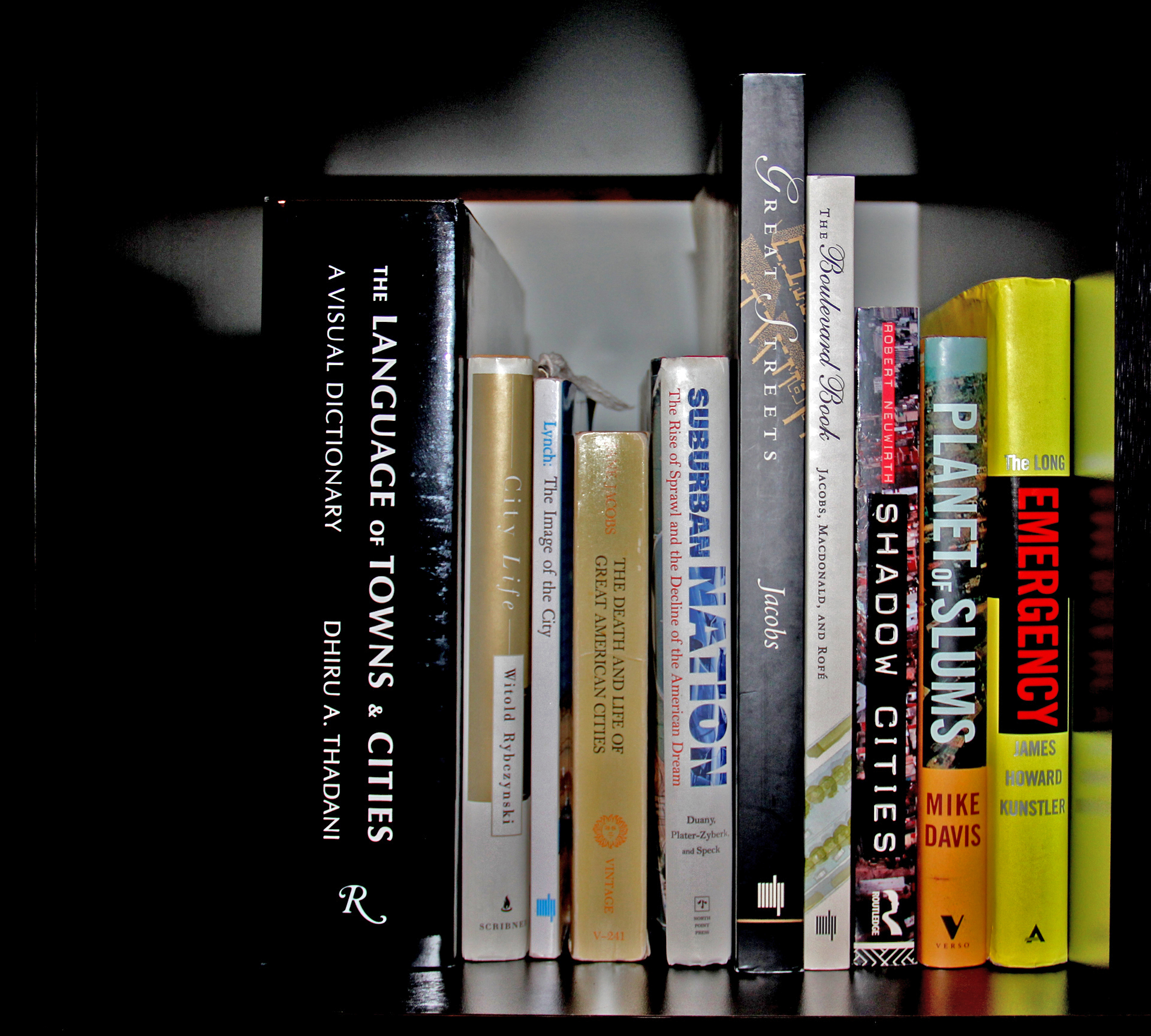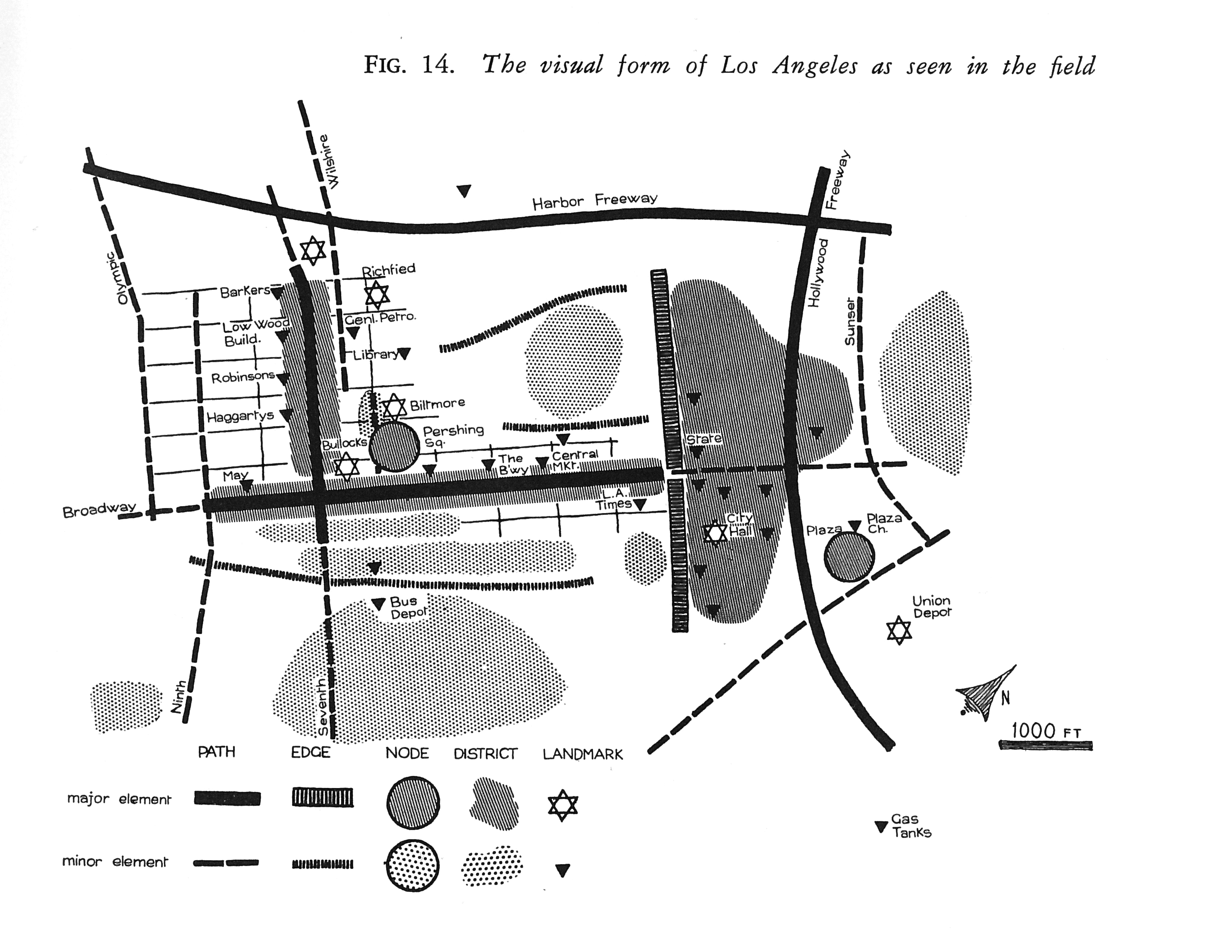By Mike Kritzman | January 10, 2013
In response to one of 2012’s big holiday gifts for bibliophiles, My Ideal Bookshelf, in which various leading cultural figures provide a list of their favorite books, I’ve decided to jump on the bandwagon and offer up my own personal list. However, in the spirit of this blog and for the sake of brevity (I really like books), I figured it would be more appropriate to limit my selections to those one would find in a Planning/Urban Design library.
Great Streets by Allan B. Jacobs
The Boulevard Book: History, Evolution, Design of Multiway Boulevards by Allan B. Jacobs, Elizabeth MacDonald, and Yodan Rofe
I’ll start with these two books as I believe they should be at the very top of a required reading list for anyone with even a passing interest in urban design. With these two offerings, Allan Jacobs, Elizabeth MacDonald, and Yodan Rofe have quite literally ‘written the book’ on designing great streets. Able to be read in whole or referenced as manuals, the collection of essays, diagrams, illustrations and character studies found within these two volumes represent THE source for best practices in many areas. They also serve as a source of ammunition against much of the traffic engineering dogma of the past, which any designer who has been told a certain element of a streetscape, “just can’t be done” will appreciate. For me, the ultimate lesson from the authors’ combined teachings is a notion that I have tried to keep at the core of my own work; that streets… are for people!
The Language of Towns & Cities: A Visual Dictionary by Dhiru A. Thadani
Though quite long by any standard, Thadani’s tome on all things environmental design deserves recognition for its ambition alone. Featuring a variety of illustrations and well written descriptions, The Language of Towns & Cities is a very useful reference tool covering just about any topic related to design and planning that one could imagine.
The Death and Life of Great American Cities by Jane Jacobs
There isn’t much that one can say about this book that hasn’t been said already—it is a true classic in the realm of city planning. Written in an era when many commonly held, but ultimately destructive, ideas were running full steam ahead, Jane Jacobs took a step back and objectively examined the various elements and factors that comprise vibrant urban spaces. The Death and Life of Great American Cities is a book that deserves to be read slowly, and repeatedly.
The Image of The City by Kevin Lynch
Alongside Jane Jacobs’ Death and Life, this book represents another seminal body of work in modern urban design and planning philosophy. When I read Image of the City for the first time, I couldn’t help but have a sense of déjà vu because it felt like I had read it before. And whether today’s designers and planners have read it or not, virtually all of them have been directly influenced by Lynch’s teachings. One look a planning diagram says it all.
City Life by Witold Rybczynski
In City Life, Witold Rybczynski—one of the nation’s preeminent architectural scholars—provides a clearly written summary on the evolution of urban settlements in North America. The great value of this book is in the way it connects the nuances of physical design with social and cultural factors.
Suburban Nation: The Rise of Sprawl and the Decline of the American Dream by Andres Duany, Elizabeth Plater-Zyberk, and Jeff Speck
A modern classic, no other book captures the spirit and ideas of New Urbanism or progressive planning ideology better. You can call it a crash course, a battle cry, manifesto, or whatever else, but if you are just now discovering New Urbanism (where have you been?), this book is the best place to start.
Planet of Slums by Mike Davis & Shadow Cities by Robert Neuwirth
These two books represent the yin and yang on informal settlements. Planet of Slums provides a stark view of the major social and environmental challenges presented by informal settlements, and the incredible rate at which they are growing. While Neuwirth’s book presents the humanistic side of informal settlements, emphasizing the incredible innovateness and vibrance of the people and communities that can be found within them. While both are important contributions, if you have ever lived or worked in a ‘slum,’ Shadow Cities is the book for you.
The Long Emergency by James Howard Kuntsler
My list couldn’t have been complete without at least one book from James Howard Kuntsler, and The Long Emergency is arguably his most impactful. In this book, Kuntsler provides a frightening account of the enormous issues we currently face as a result of our collective actions related to energy use and settlement patterns. In short, The Long Emergency provides the backbone for today’s progressive planning movements.


